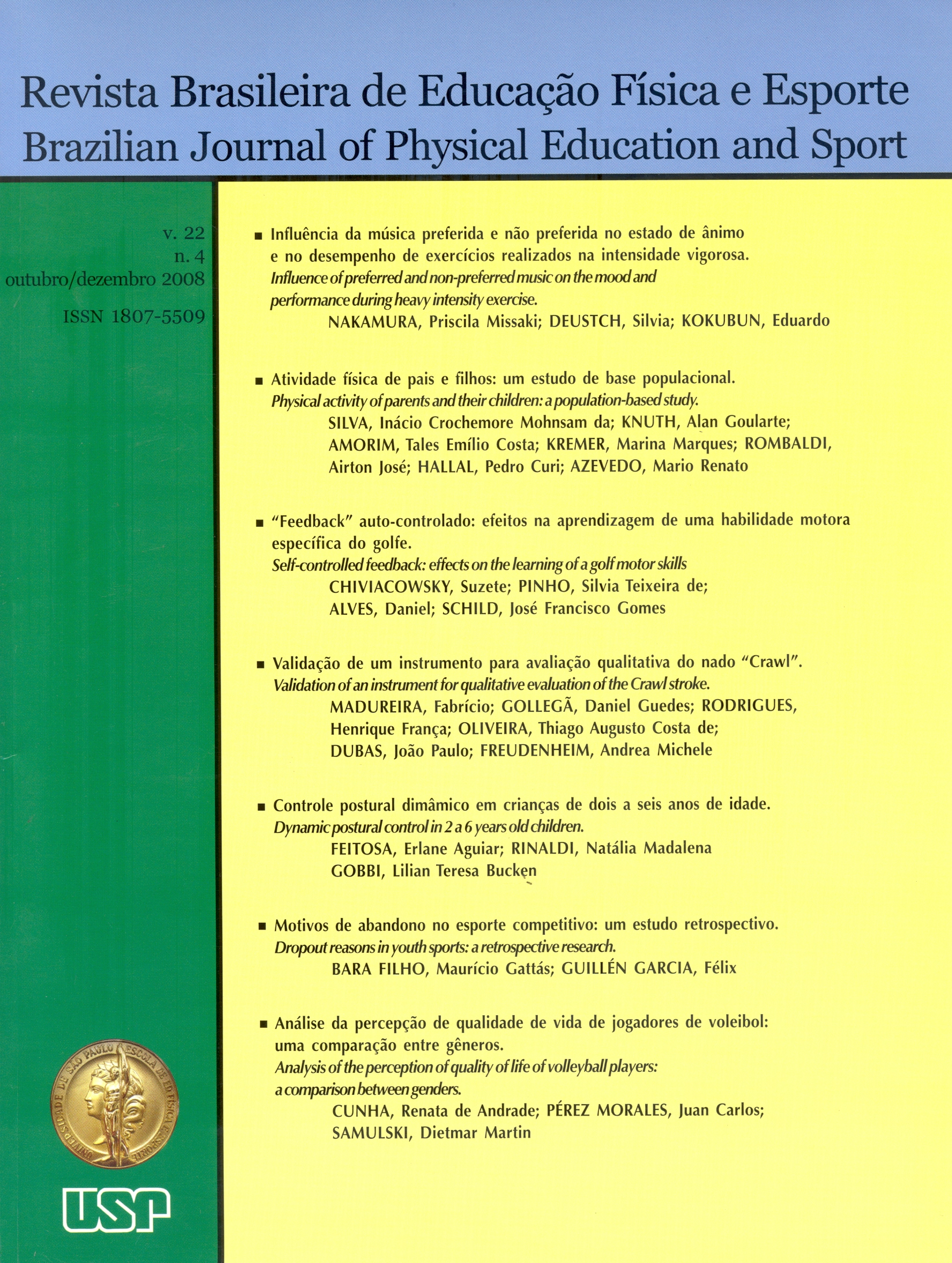Controle postural dinâmico em crianças de dois a seis anos de idade
DOI:
https://doi.org/10.1590/S1807-55092008000400005Palavras-chave:
Desenvolvimento motor, Controle postural, Equilíbrio dinâmicoResumo
O desenvolvimento do controle postural tem sido observado sob diferentes paradigmas experimentais, sendo a maioria com tarefas que requerem manutenção da postura ereta. Assim, o objetivo deste estudo foi investigar as mudanças no controle postural durante o desenvolvimento em tarefa de equilíbrio dinâmico. A tarefa experimental foi permanecer sobre uma plataforma de força durante 30 segundos, mantendo a postura ereta nos primeiros 15 segundos, alcançando e pegando um brinquedo sobre uma mesa (movimento médiolateral esquerdo) e trazendo-o junto ao tórax, nos 15 segundos finais. A amplitude média de oscilação (AMO) no sentido médiolateral foi estabelecida como variável dependente em cada fase da tarefa. Efeitos principais de grupo etário foram observados no movimento de trazer o brinquedo junto ao peito. A AMO aumentou significativamente entre os 15 segundos iniciais e os finais da tarefa. Os resultados permitiram concluir que mudanças desenvolvimentais no controle postural ocorrem na execução de tarefas de equilíbrio dinâmico.Downloads
Os dados de download ainda não estão disponíveis.
Downloads
Publicado
2008-12-01
Edição
Seção
naodefinida
Licença
Todo o conteúdo da revista, exceto onde está identificado, está licenciado sob uma Licença Creative Commons (CC-BY)
Como Citar
Feitosa, E. A., Rinaldi, N. M., & Gobbi, L. T. B. (2008). Controle postural dinâmico em crianças de dois a seis anos de idade . Revista Brasileira De Educação Física E Esporte, 22(4), 285-291. https://doi.org/10.1590/S1807-55092008000400005


